|
#1
| |||
| |||
|
Here I am looking for the IIT JAM physics question paper, kindly provide me the same Joint Admission Test is conducted jointly by all the seven IITs to test the students abilities to take up science as career option. The exam is taken for the admission to courses like M.Sc., Dual Degree (M.Sc.-Ph.D.) and other post - bachelor degree programmes at IITs. Physics syllabus covers following topics given below: Mathematical Methods Mechanics and General Properties of Matter Oscillations, Waves and Optics Electricity and Magnetism Kinetic theory, Thermodynamics Modern Physics Solid State Physics, Devices and Electronics Mathematical Methods: Calculus of single and multiple variables, partial derivatives, Jacobian, imperfect and perfect differentials, Taylor expansion, Fourier series. Vector algebra, Vector Calculus, Multiple integrals, Divergence theorem, Greens theorem, Stokes theorem. First order equations and linear second order differential equations with constant coefficients. Matrices and determinants, Algebra of complex numbers. Mechanics and General Properties of Matter: Newtons laws of motion and applications, Velocity and acceleration in Cartesian, polar and cylindrical coordinate systems, uniformly rotating frame, centrifugal and Coriolis forces, Motion under a central force, Keplers laws, Gravitational Law and field, Conservative and non-conservative forces. System of particles, Center of mass, equation of motion of the CM, conservation of linear and angular momentum, con-servation of energy, variable mass systems. Elastic and inelastic collisions. Rigid body motion, fixed axis rotations, rotation and translation, moments of Inertia and products of Inertia, parallel and perpendicular axes theorem. Principal moments and axes. Kinematics of moving fluids, equation of continuity, Eulers equation, Bernoullis theorem . Oscillations, Waves and Optics: Differential equation for simple harmonic oscillator and its general solution. Superposition of two or more simple harmonic oscillators. Lissajous figures. Damped and forced oscillators, resonance. Wave equation, traveling and standing waves in one-dimension. Energy density and energy transmission in waves. Group velocity and phase velocity. Sound waves in media. Doppler Effect. Fermats Principle. General theory of image formation. Thick lens, thin lens and lens combinations. Interference of light, optical path retardation. Fraunhofer diffraction. Rayleigh criterion and resolving power. Diffraction gratings. Polarization: linear, circular and elliptic polarization. Double refraction and optical rotation. Electricity and Magnetism: Coulombs law, Gausss law. Electric field and potential. Electrostatic boundary conditions, Solution of Laplaces equation for simple cases. Conductors, capacitors, dielectrics, dielectric polarization, volume and surface charges, electrostatic energy. Biot-Savart law, Amperes law, Faradays law of electromagnetic induction, Self and mutual inductance. Alternating currents. Simple DC and AC circuits with R, L and C components. Displacement current, Maxwells equations and plane electromagnetic waves, Poyntings theorem, reflection and refraction at a dielectric interface, transmission and reflection coefficients (normal incidence only). Lorentz Force and motion of charged particles in electric and magnetic fields. Kinetic theory, Thermodynamics: Elements of Kinetic theory of gases. Velocity distribution and Equipartition of energy. Specific heat of Mono-, di- and tri-atomic gases. Ideal gas, van-der-Waals gas and equation of state. Mean free path. Laws of thermodynamics. Zeroth law and concept of thermal equilibrium. First law and its consequences. Isothermal and adiabatic processes. Reversible, irreversible and quasi-static processes. Second law and entropy. Carnot cycle. Maxwells thermodynamic relations and simple applications. Thermodynamic potentials and their applications. Phase transitions and Clausius-Clapeyron equation. Ideas of ensembles, Maxwell-Boltzmann, Fermi-Dirac and Bose Einstein distributions. Modern Physics: Inertial frames and Galilean invariance. Postulates of special relativity. Lorentz transformations. Length contraction, time dilation. Relativistic velocity addition theorem, mass energy equivalence. Blackbody radiation, photoelectric effect, Compton effect, Bohrs atomic model, X-rays. Wave-particle duality, Uncertainty principle, the superposition principle, calculation of expectation values, Schrödinger equation and its solution for one, two and three dimensional boxes. Solution of Schrödinger equation for the one dimensional harmonic oscillator. Reflection and transmission at a step potential, Pauli exclusion prin-ciple. Structure of atomic nucleus, mass and binding energy. Radioactivity and its applications. Laws of radioactive decay. Solid State Physics, Devices and Electronics: Crystal structure, Bravais lattices and basis. Miller indices. X-ray diffraction and Bragg's law Intrinsic and extrinsic semiconductors, variation of resistivity with temperature. Fermi level. p-n junction diode, I-V characteristics, Zener diode and its applications, BJT: characteristics in CB, CE, CC modes. Single stage amplifier, two stage R-C coupled amplifiers. Simple Oscillators: Barkhausen condition, sinusoidal oscillators. OPAMP and applications: Inverting and non-inverting amplifier. Boolean algebra: Binary number systems; conversion from one system to another system; binary addition and subtraction. Logic Gates AND, OR, NOT, NAND, NOR exclusive OR; Truth tables; combination of gates; de Morgans theorem. 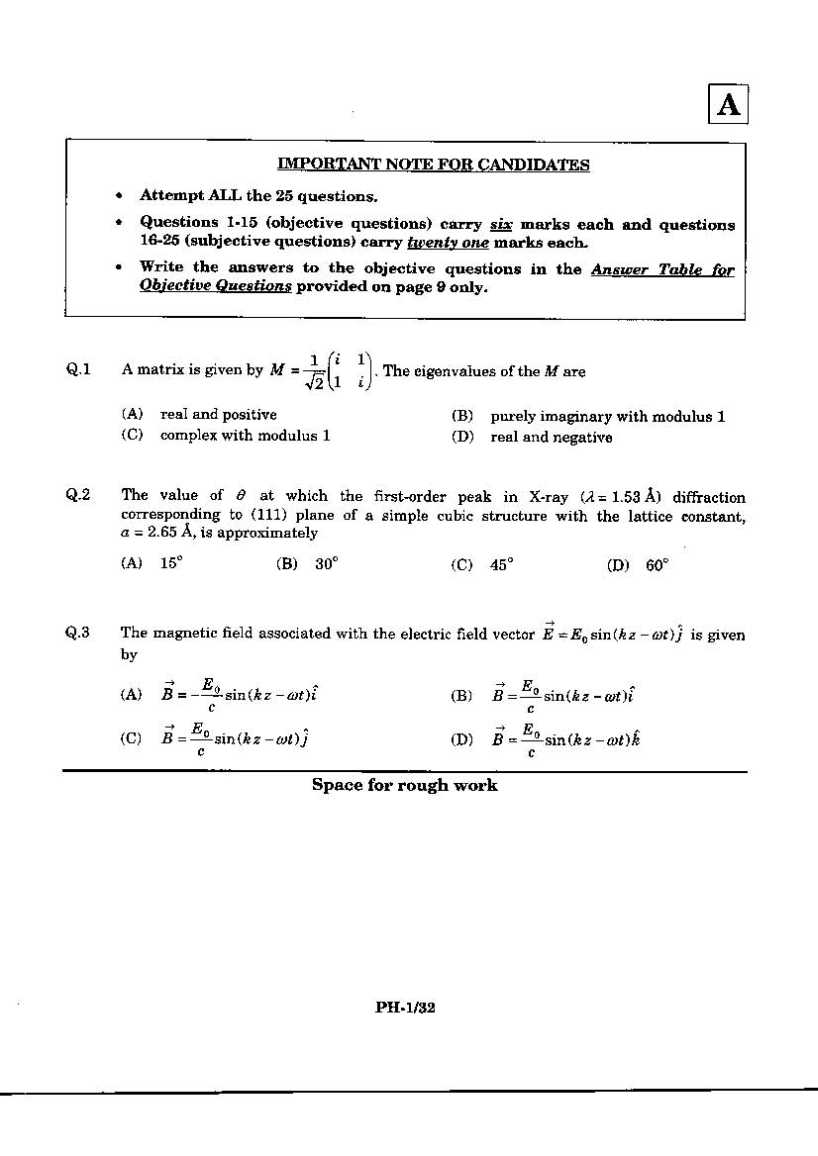 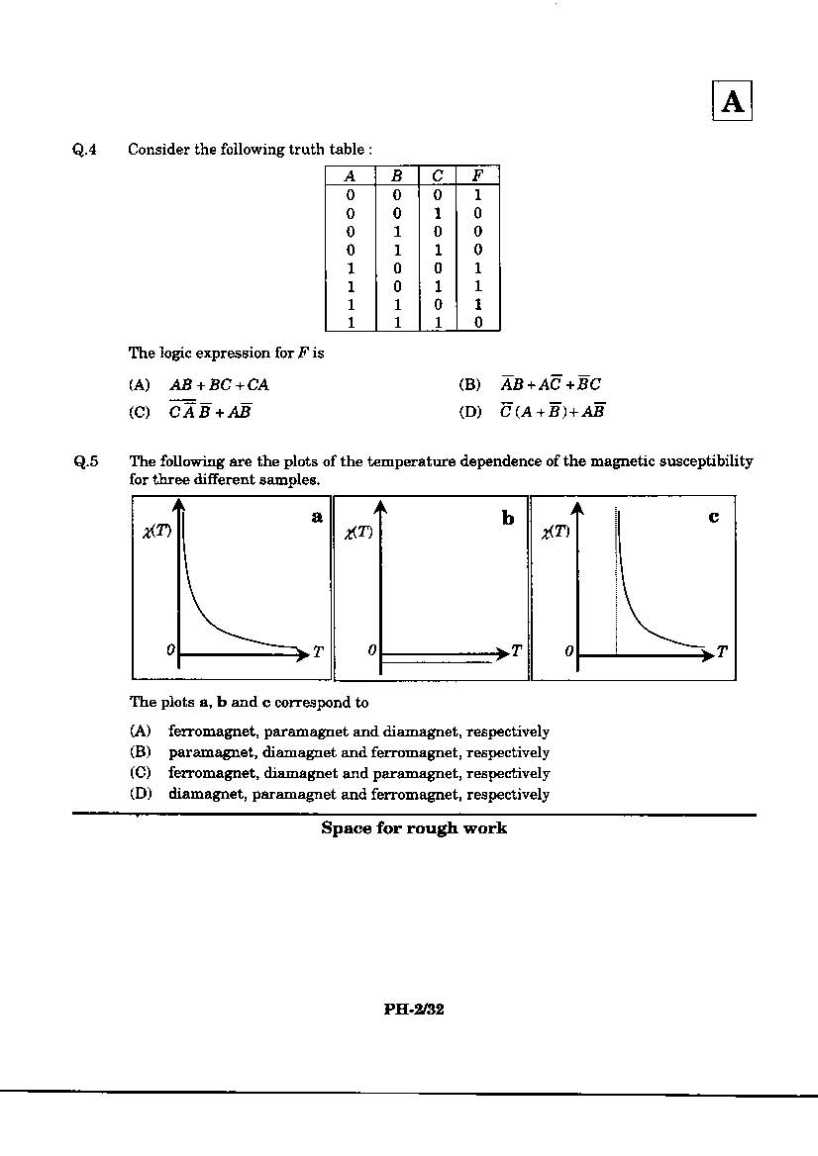 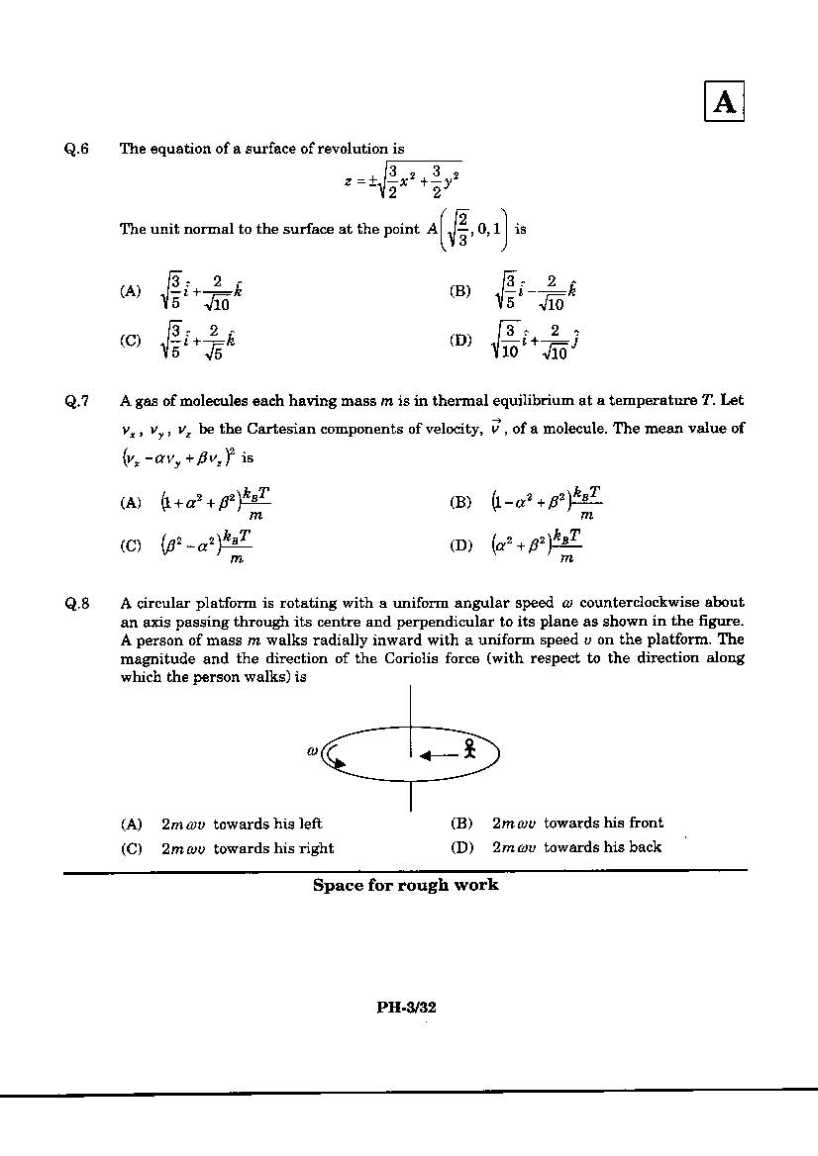 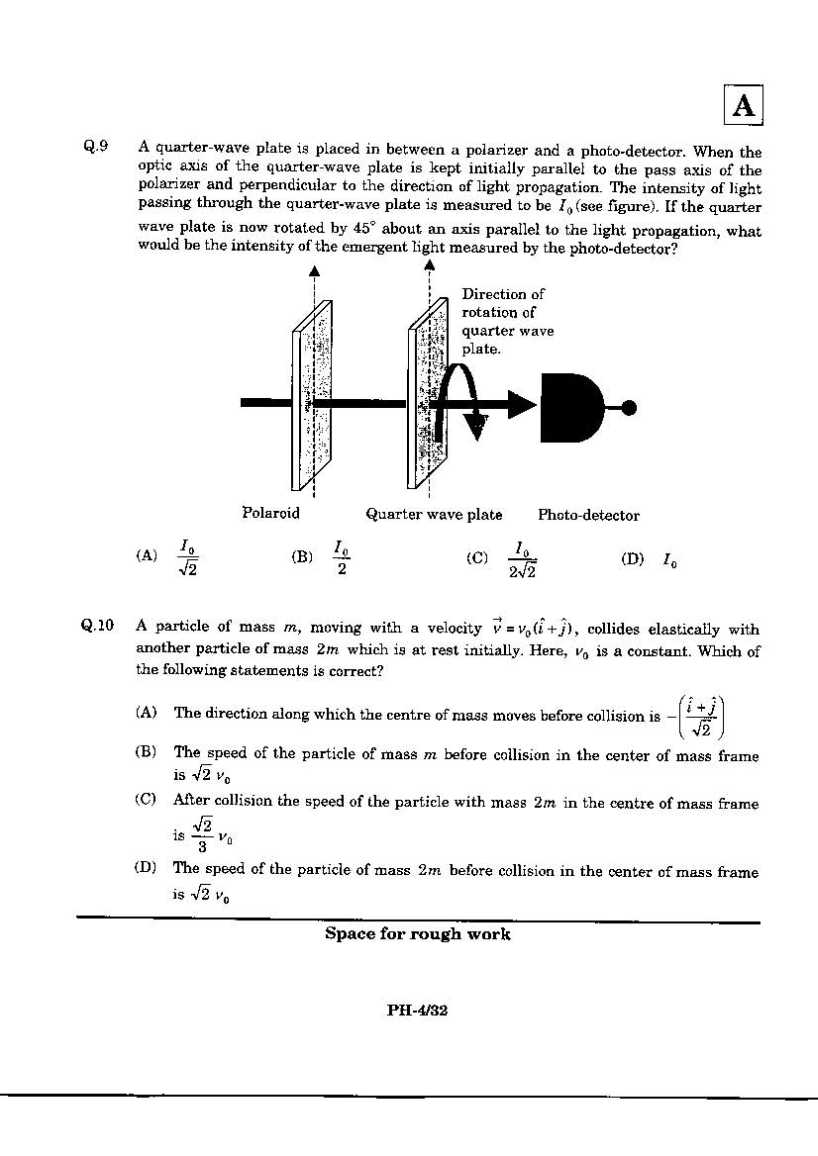 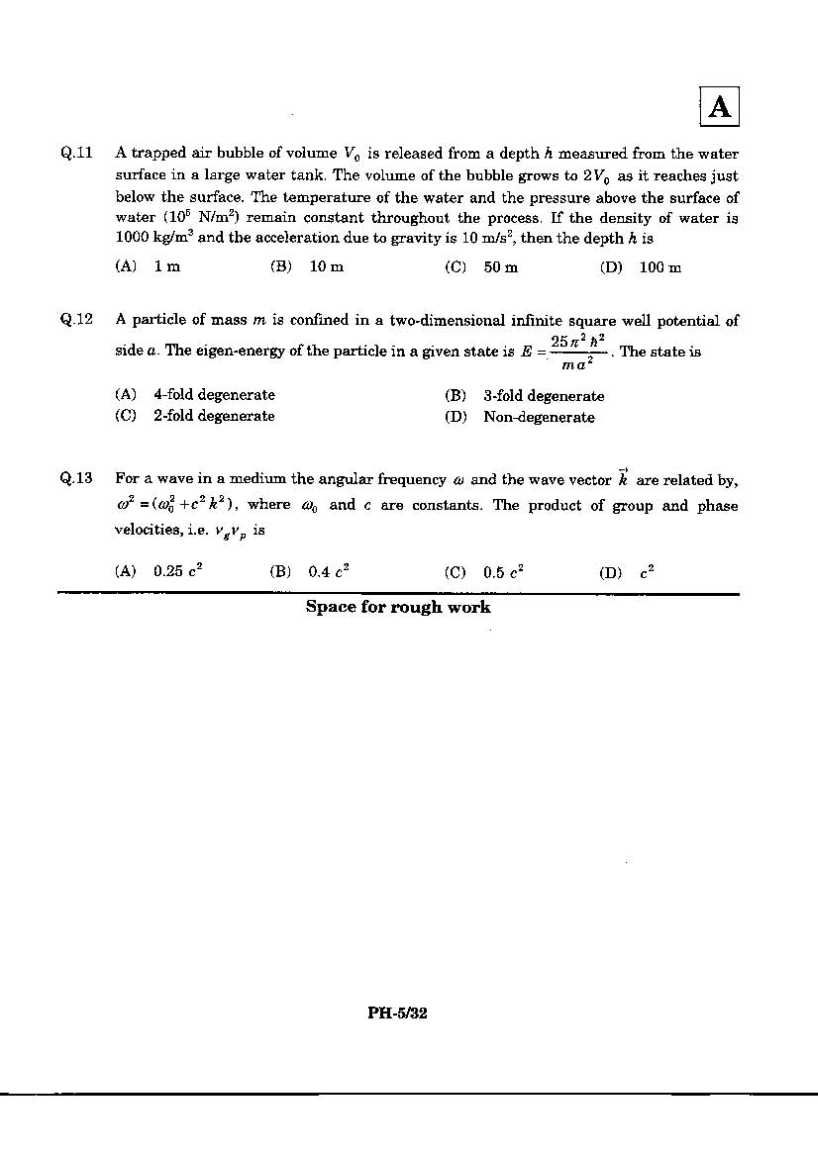 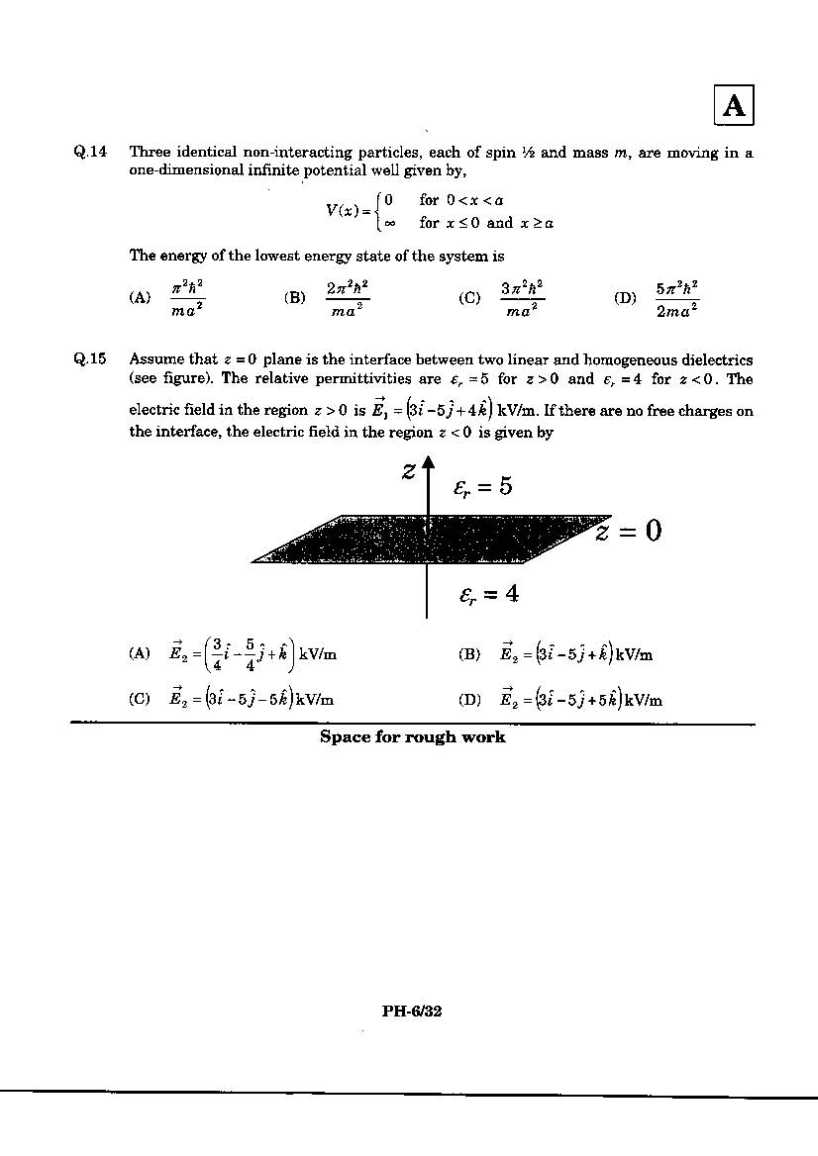 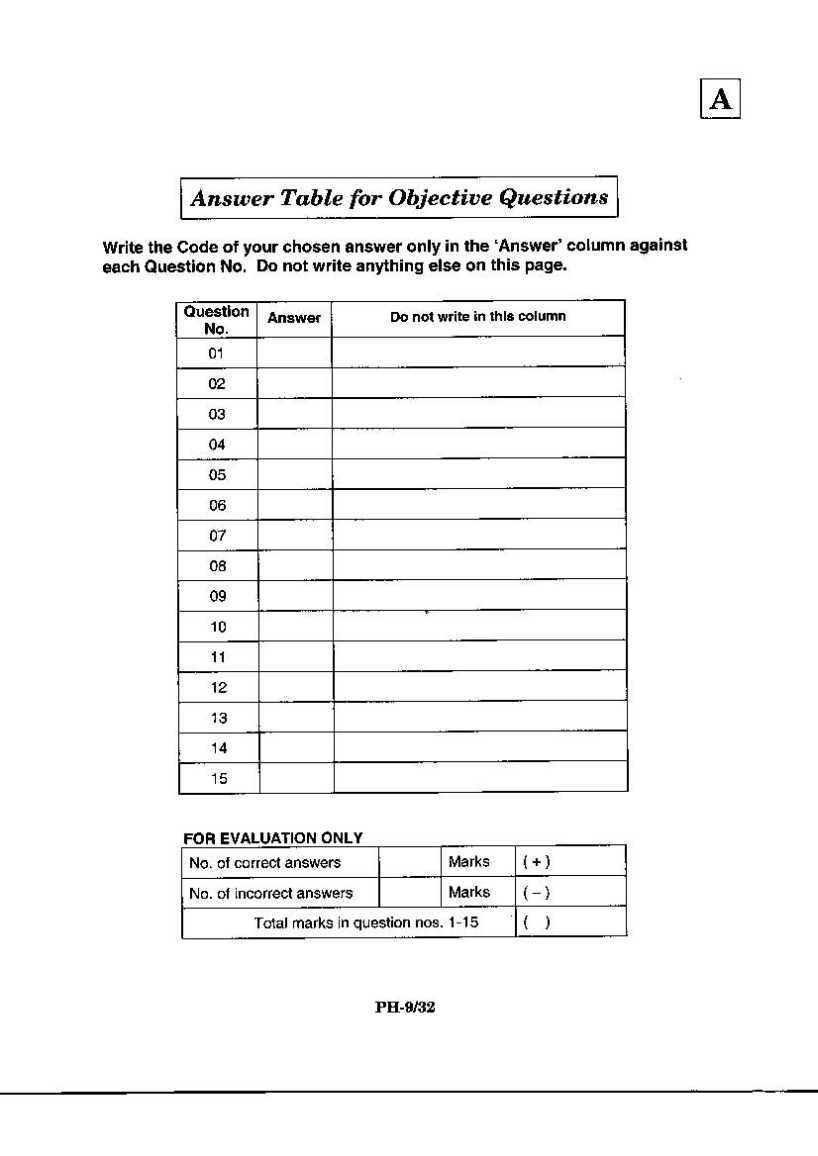 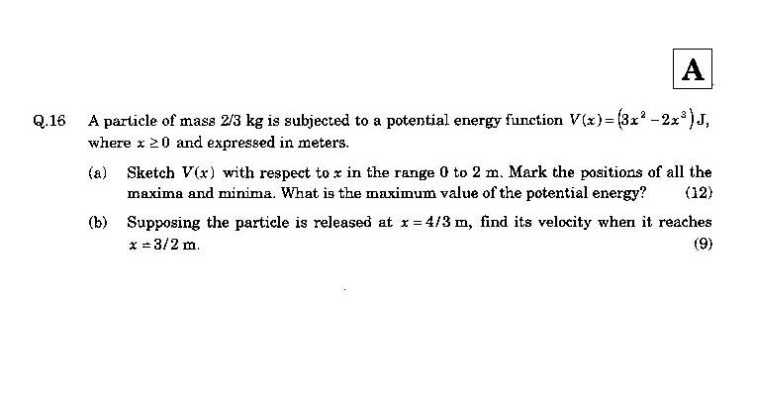 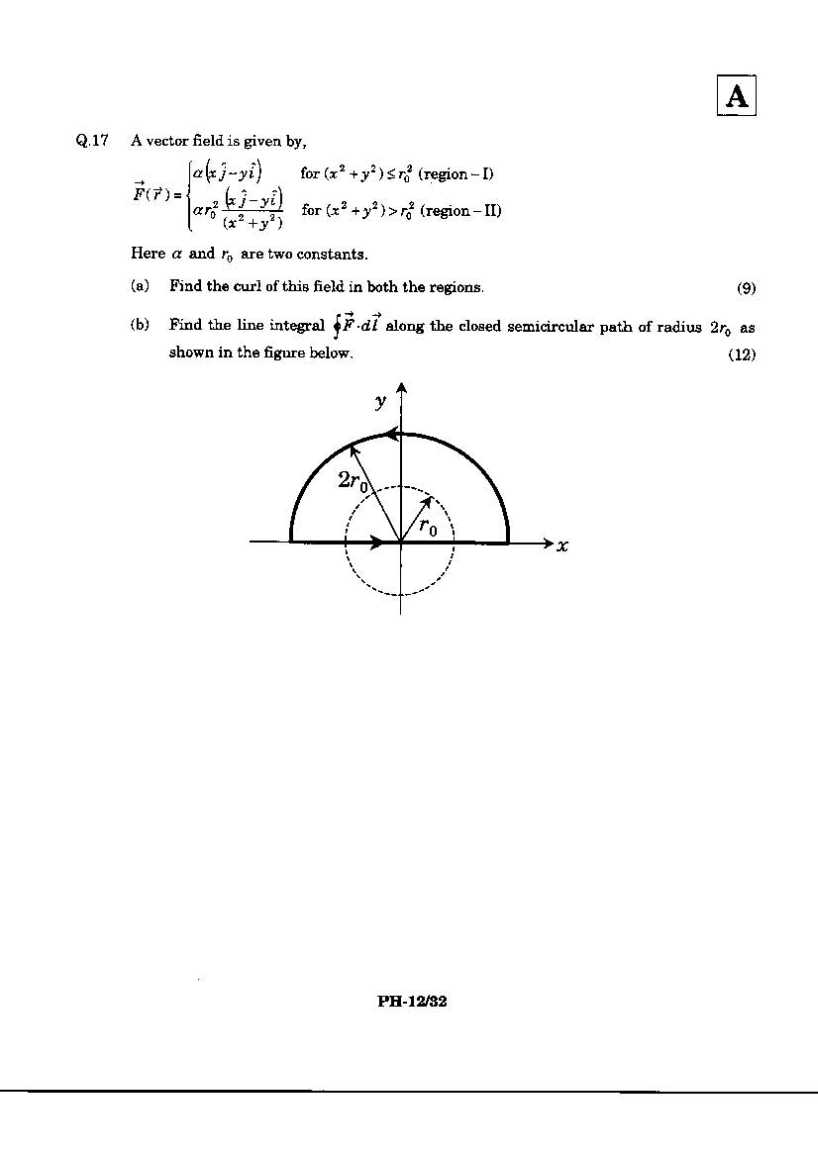 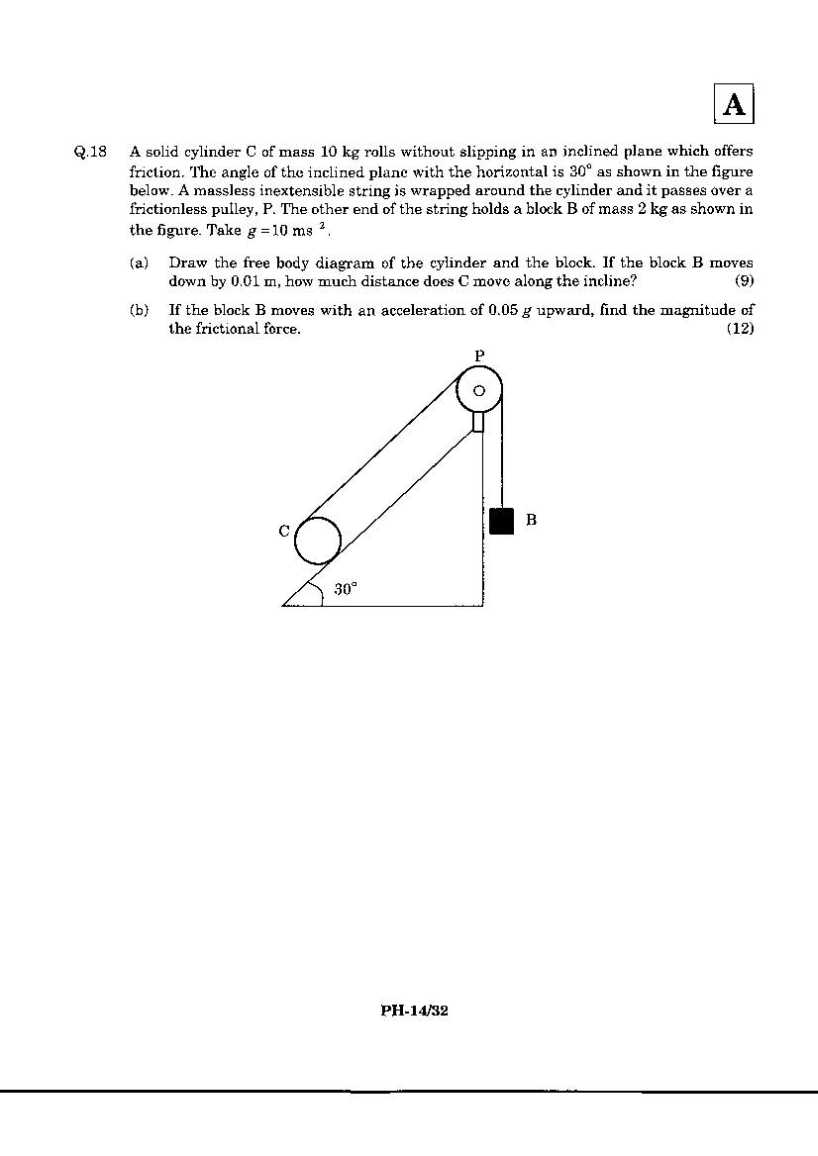 For the question paper , here i am giving attachment () Last edited by Aakashd; June 28th, 2019 at 03:27 PM. |
|
#2
| |||
| |||
|
As you are looking for the IIT JAM physics question paper, here I am uploading a PDF file that contains the same. You can use this questions paper in your studies. I have taken following questions from the attachment: 2 kg of a liquid (specific heat = 2000 J K-1 kg-1, independent of temperature) is heated from 200 K to 400 K by either of the following two processes P1 and P2: P1: bringing it in contact with a reservoir at 400 K. P2: bringing it first in contact with a reservoir at 300 K till equilibrium is reached, and then bringing it in contact with another reservoir at 400 K. Calculate the change in the entropy of the liquid and that of the universe in processes P1 and P2. Neglect any change in volume of the liquid. A water cannon starts shooting a jet of water horizontally, at t = 0, into a heavy trolley of mass M placed on a horizontal ground. The nozzle diameter of the water cannon is d, the density of water is ρ, and the speed of water coming out of the nozzle is u. Find the speed of the trolley as a function of time. Assume that all the water from the jet is collected in the trolley. Neglect all frictional losses. Remaining questions are in the attachment, please click on it…….
__________________ Answered By StudyChaCha Member |
|
#6
| |||
| |||
|
As per your requirement, here, I am giving you question paper of the IIT JAM physics. A tiny dust particle of mass 1.4 ×10-11 kg is floating in air at 300 K. Ignoring gravity, its rms speed (in μ m/s) due to random collisions with air molecules will be closest to (A) 0.3 (B) 3 (C) 30 (D) 300 When the temperature of a blackbody is doubled, the maxim u m value of its spectral energy density, with respect to that at initial temperature, would become (A) 1/16 times (B) 8 times (C) 16 times (D) 32 times Light takes 4 hours to cover the distance from Sun to Neptune. If you travel in a spaceship at a speed 0.99c (where c is the speed of light in vacuum), the time (in minutes) required to cover the same distance measured with a clock on the s paceship will be approximately (A) 34 (B) 56 (C) 85 (D) 144 2 kg of a liquid (specific heat = 2000 J K-1 kg -1, independent of temperature) is heated from 200 K to 400 K by either of the following two processes P1 and P2: P1: bringing it in contact with a reservoir at 400 K. P2: bringing it first in contact with a reservoir at 300 K till equilibrium is reached, and then bringing it in contact with another reservoir at 400 K. Calculate the change in the entropy of the liquid and that of the universe in processes P1 and P2. Neglect any change in volume of the liquid. A long straight solenoid of radius R and n turns per unit length carries a current I =αt, where α is a constant. t is time and remains finite. The axis of the solenoid is along the z - axis. Find the magnetic field, electric field and the Poynting vector inside the solenoid.Show these vectors at some instant t1 at any point (i) on the axis of the solenoid, and (ii) at a distance r( 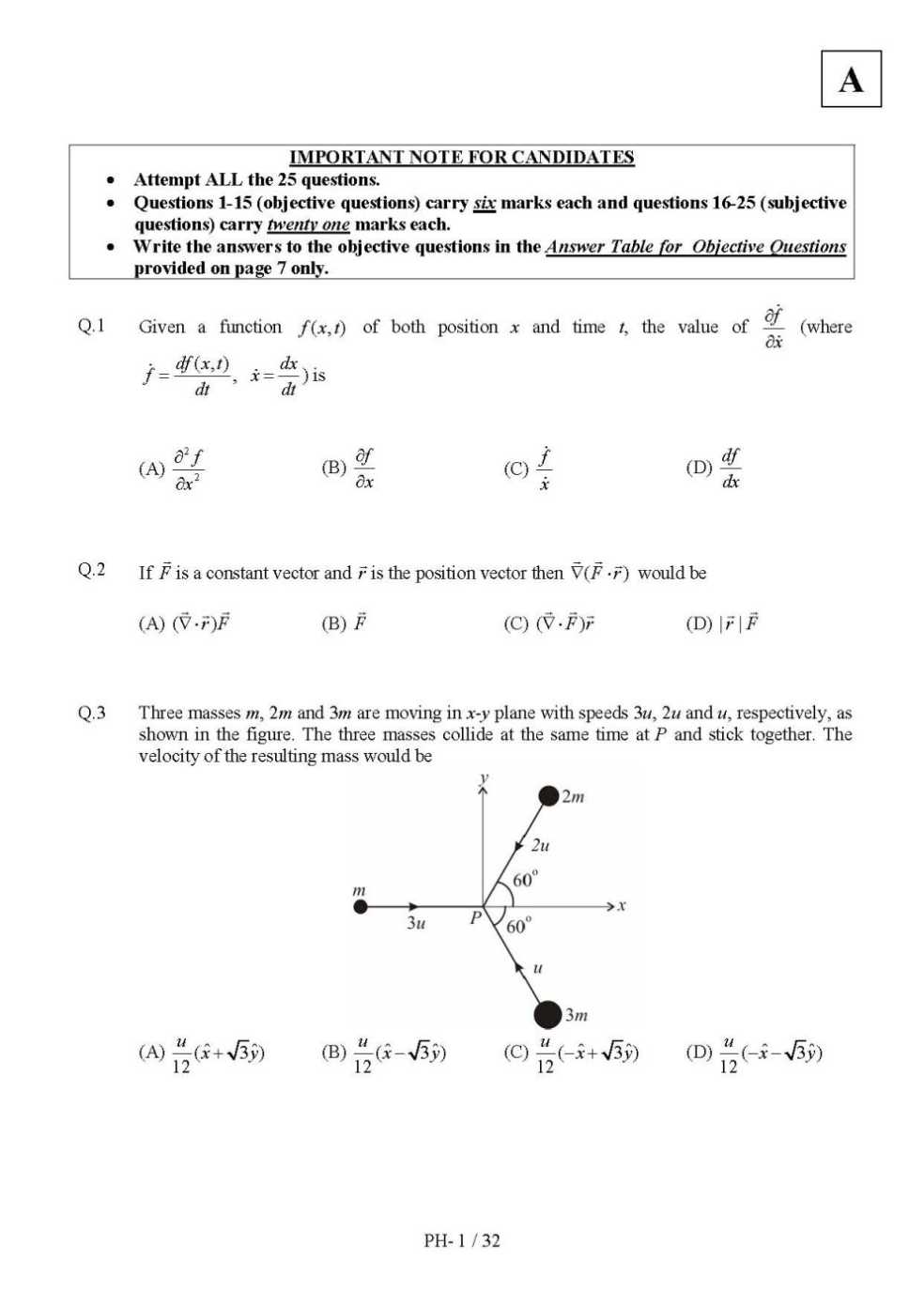 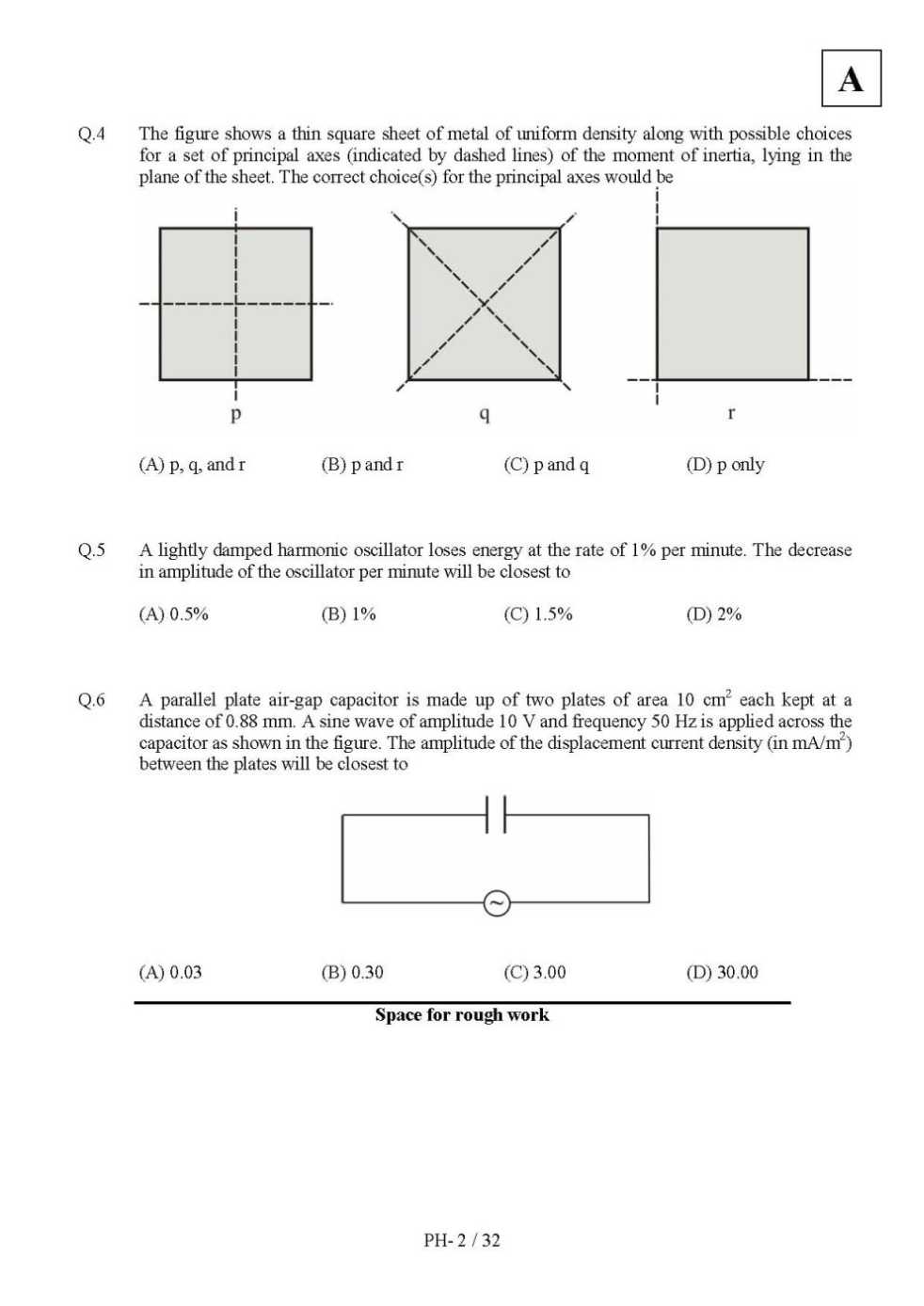 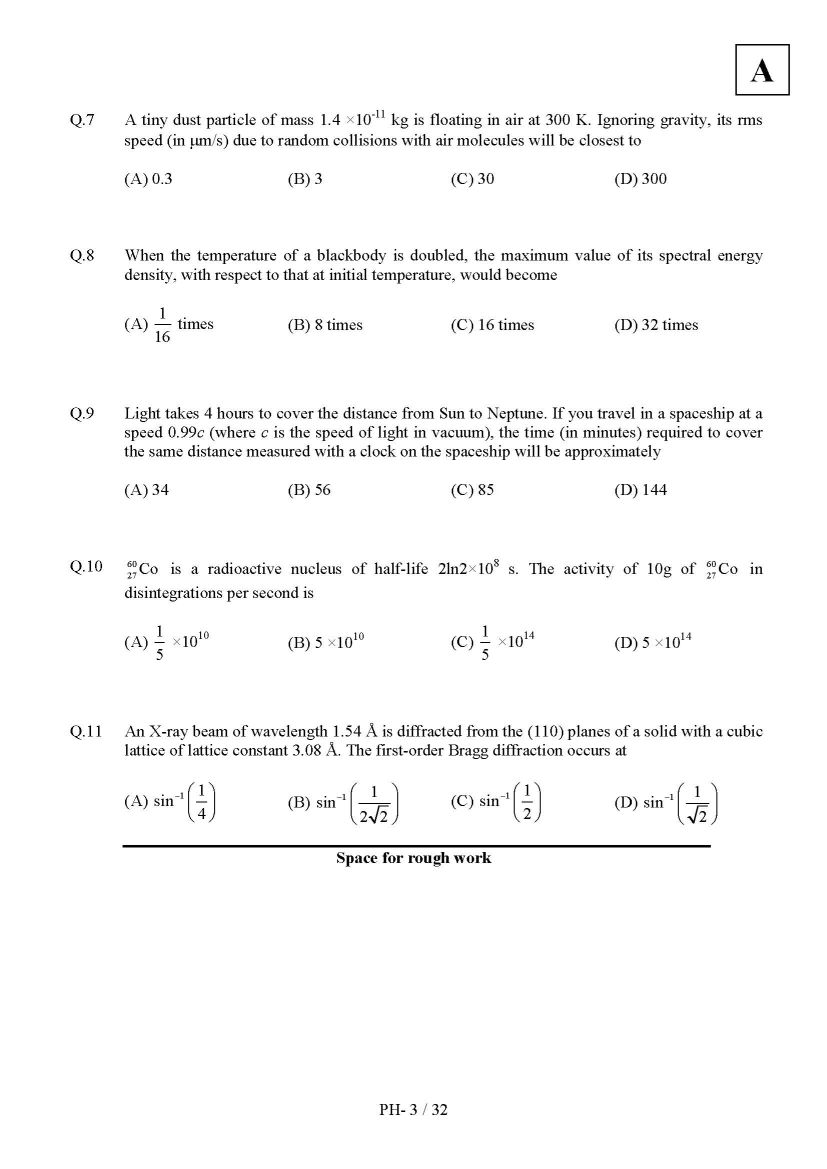  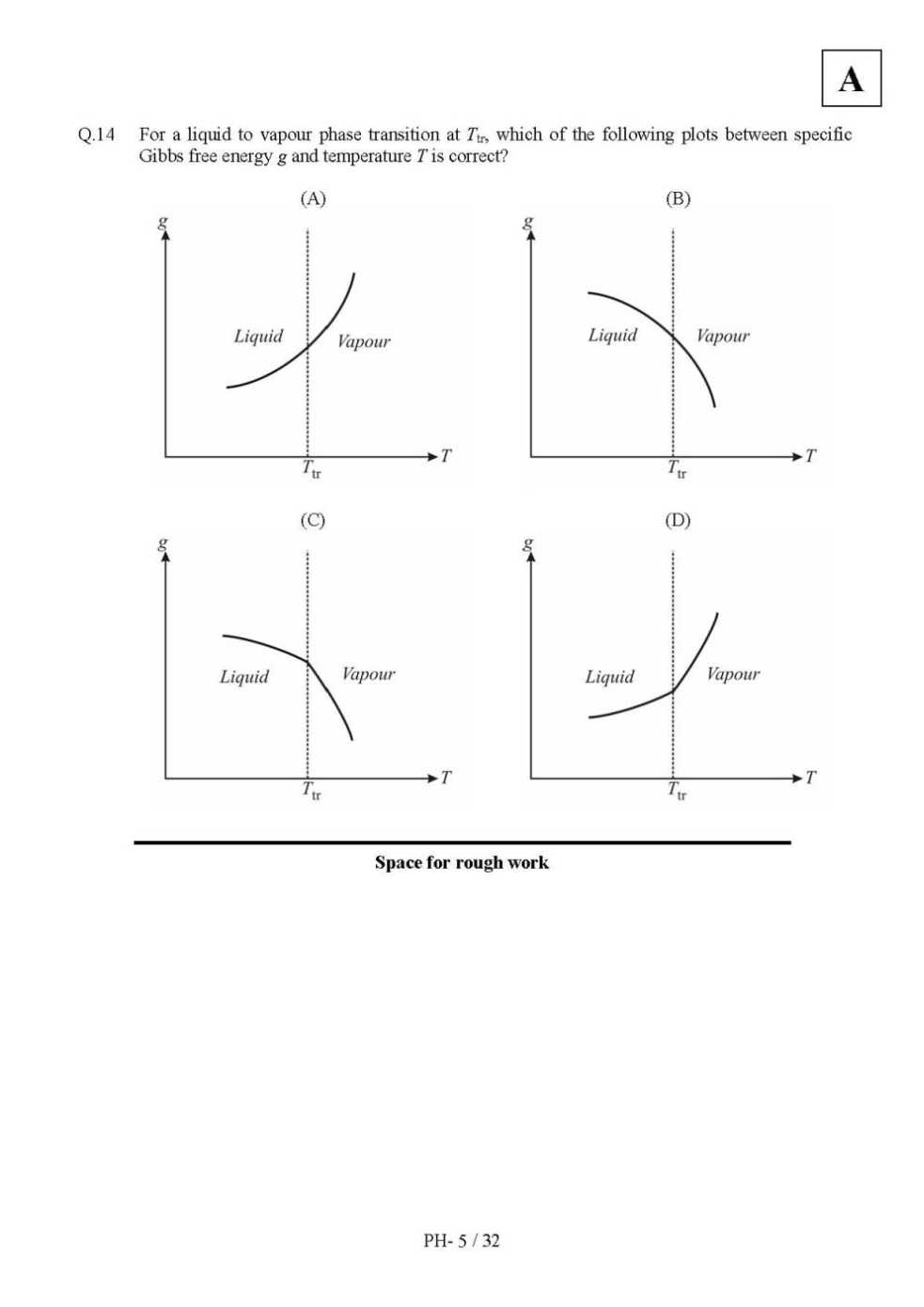 For more questions consider the attachment.
__________________ Answered By StudyChaCha Member Last edited by Aakashd; July 31st, 2018 at 09:39 AM. |